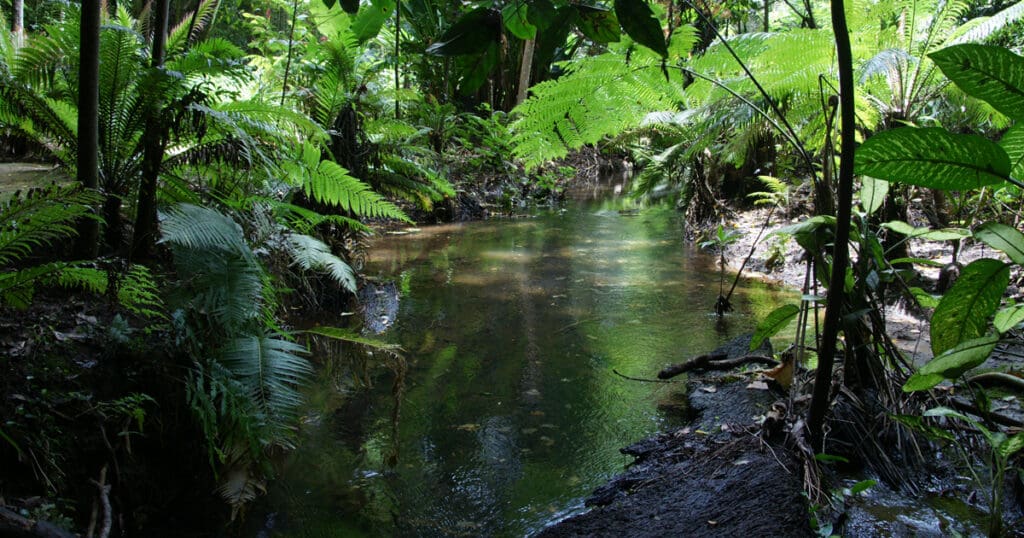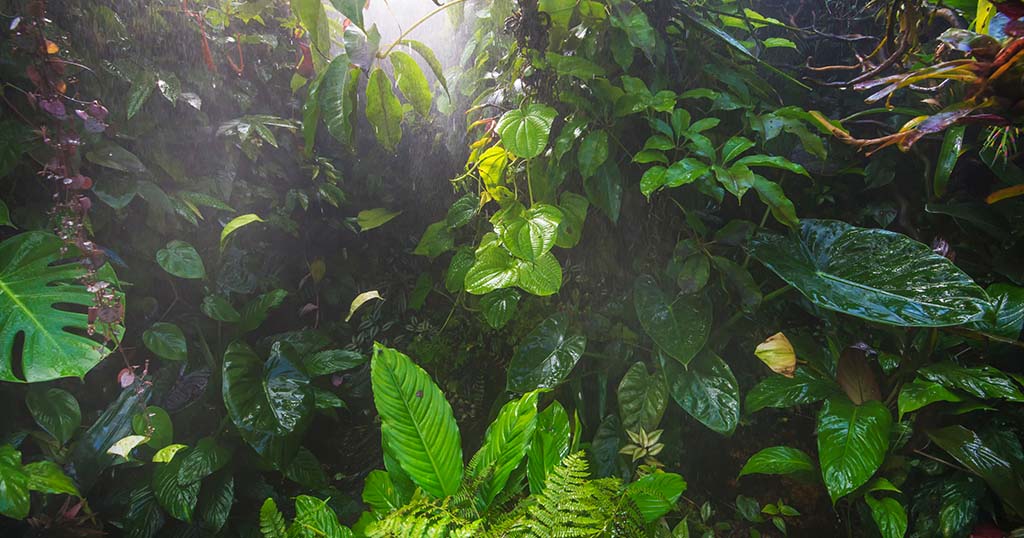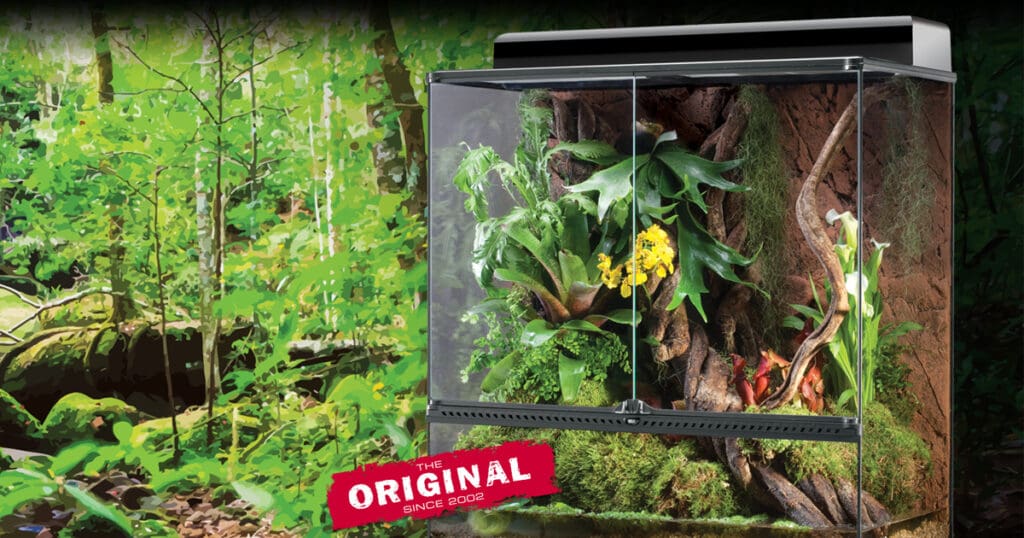
Terrarium Types
Rik Van Tiggel
Reptiles and amphibians thrive in terrariums that simulate their natural biotope. Mimicking their natural habitat provides numerous benefits: it is essential for their health, well-being, and overall success in captivity. To give you a head start in finding and creating the perfect terrarium, Exo Terra described a range of habitat setups upon which you can base your animal’s ideal terrarium setup:
Rainforest Canopy Terrarium & Paludarium
The Rainforest Canopy Terrarium landscape replicates the upper layer of the equatorial rainforest with an abundance of branches covered with leaves and epiphytic plants like orchids, bromeliads, aroids (Pothos, Philodendron, Monstera, etc.), air plants (Tillandsia spp.), lichens, mosses and ferns. It mimics the microhabitat of species living in a tree environment where only smaller water bodies occur, with no pond, stream or river in the immediate vicinity. This terrarium landscape utilizes a water dish for hydration and egg deposition.
The Rainforest Canopy Paludarium landscape is similar to the terrarium landscape but it mimics the semi-aquatic habitat of animals living in the tree environment of the riparian zone, with branches and leaves positioned over the water of a pond, stream or river. The bottom part of the terrarium is used partially as a water body for hydration and egg deposition. The Rainforest Canopy Terrarium & Paludarium habitat are best replicated in vertically oriented terrariums.
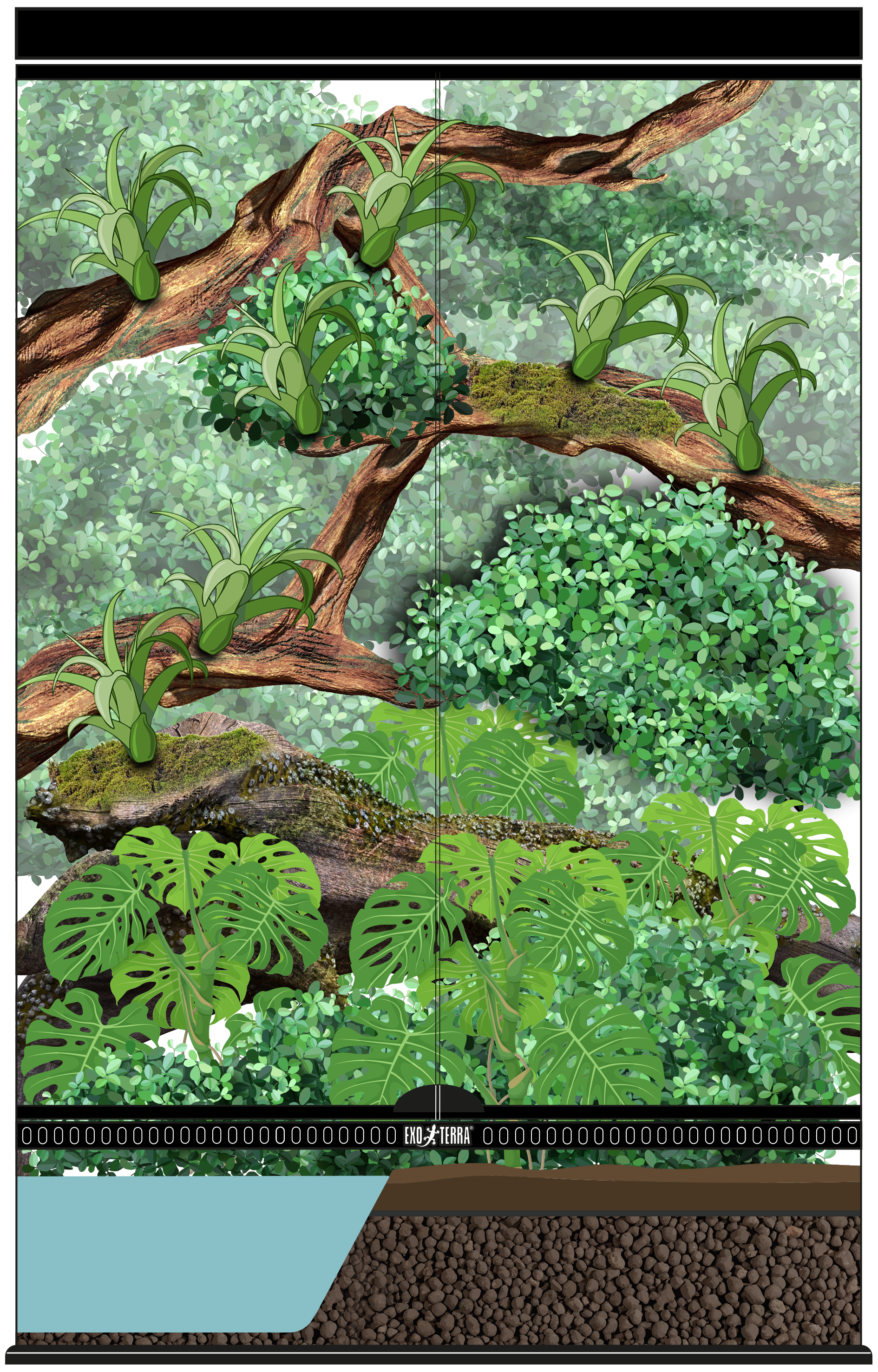
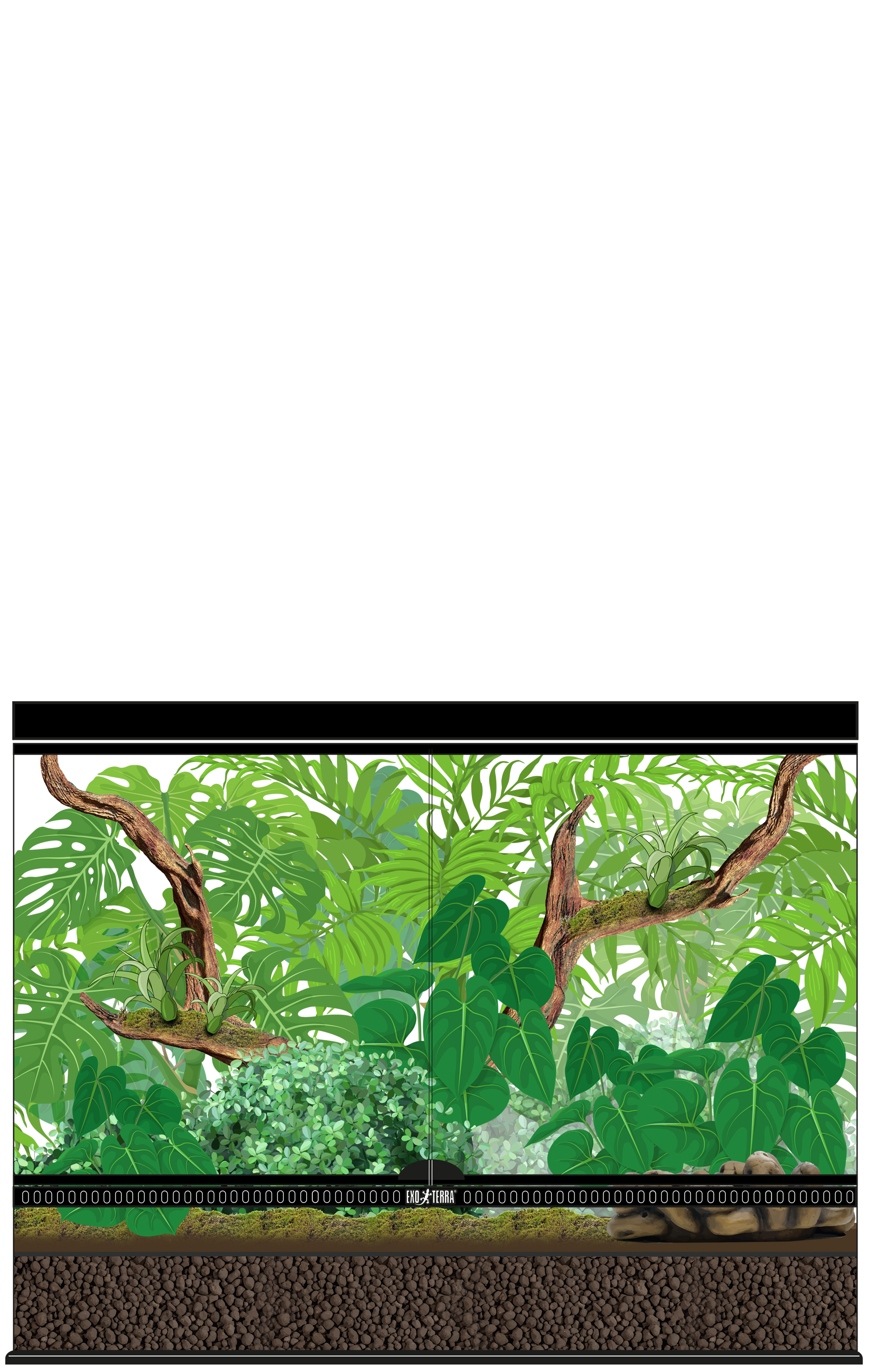
Tropical Forest & Rainforest Floor Terrarium
The Rainforest Floor Terrarium landscape mimics the understory layer of the equatorial rainforest with an abundance of smaller branches covered with leaves and epiphytic plants like orchids, bromeliads, aroids (Pothos, Philodendron, Monstera, etc.), air plants (Tillandsia spp.), lichens, mosses and ferns. To simulate a more average tropical moist forest, the Tropical Forest Floor Terrarium landscape is used, which consists of a similar setup but with a somewhat less dense vegetation.
The substrate in both habitats is covered with patches of moss and lots of leaf litter. The landscape mimics the microhabitat of species living in the understory layer of the forest, where only smaller water bodies occur, with no pond, stream or river in the immediate vicinity. A water dish is used for hydration and egg deposition. These two types of Terrarium habitats are best replicated in horizontally oriented terrariums.
The set-up can be a simple “forest floor” terrarium or a more natural bio-active type set-up with a separate land and water part mimicking a lakeshore or riverbank, by using the Bio Drain system.
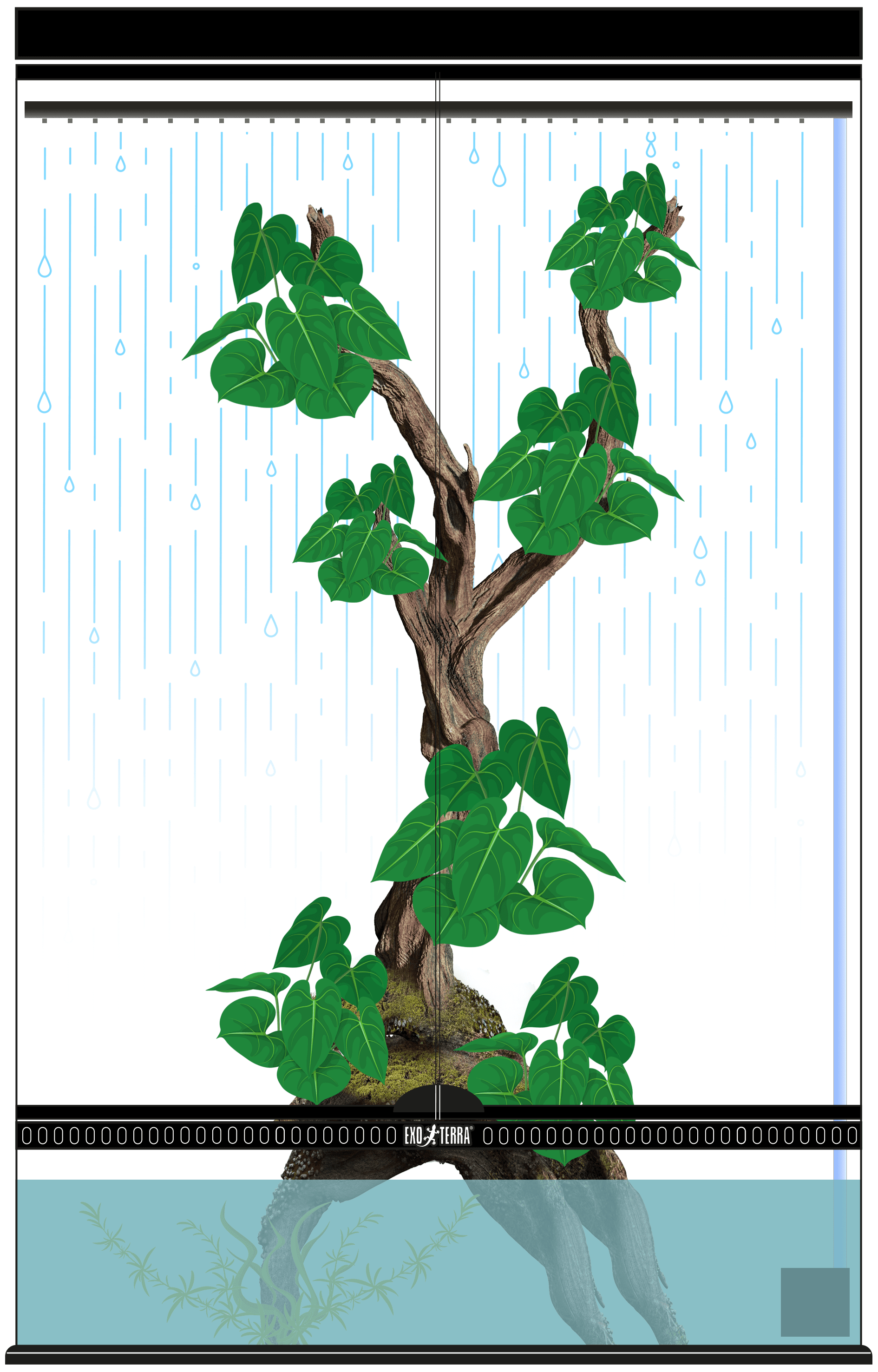
Rain Chamber Paludarium: Semi-aquatic environment of a tropical forest during heavy rainfall.
This setup can be used as a permanent habitat for aquatic, semi-aquatic or tree dwelling species, but the main purpose is to induce breeding in species that live in the riparian zone or come to the riparian zone during the mating season.
Since the landscaping of this terrarium is reduced to the bare minimum, most hobbyists prefer to use the rain-chamber paludarium only for breeding purposes and keep their animals in a nice bioactive set-up for the rest of the year. The rain-chamber paludarium landscape utilizes the complete bottom part of the terrarium as a water body for hydration and egg deposition. The landscaping consists of diagonally placed branches and cork pieces reaching to the top of the terrarium and some sturdy aroid plants like Pothos, Philodendron, Monstera, etc. and some bromeliads.
The set-up can be a simple “rain chamber-type” terrarium with a 2-6 inches (5-15cm) water part and some branches or a more natural bio-active type set-up with a separate land and water part mimicking a lakeshore or riverbank (e.g. by using the Bio Drain system). In both set-ups you will need to provide ample climbing space by strategically placing branches, cork pieces and vines in the terrarium. By arranging these perches diagonally, the animals will be able to thermoregulate, choose the amount of UVB they want to absorb, etc. With a combination of sturdy artificial and live plants, you can provide the much-needed foliage which will allow the animals to rest and hide in shaded areas of the Terrarium.
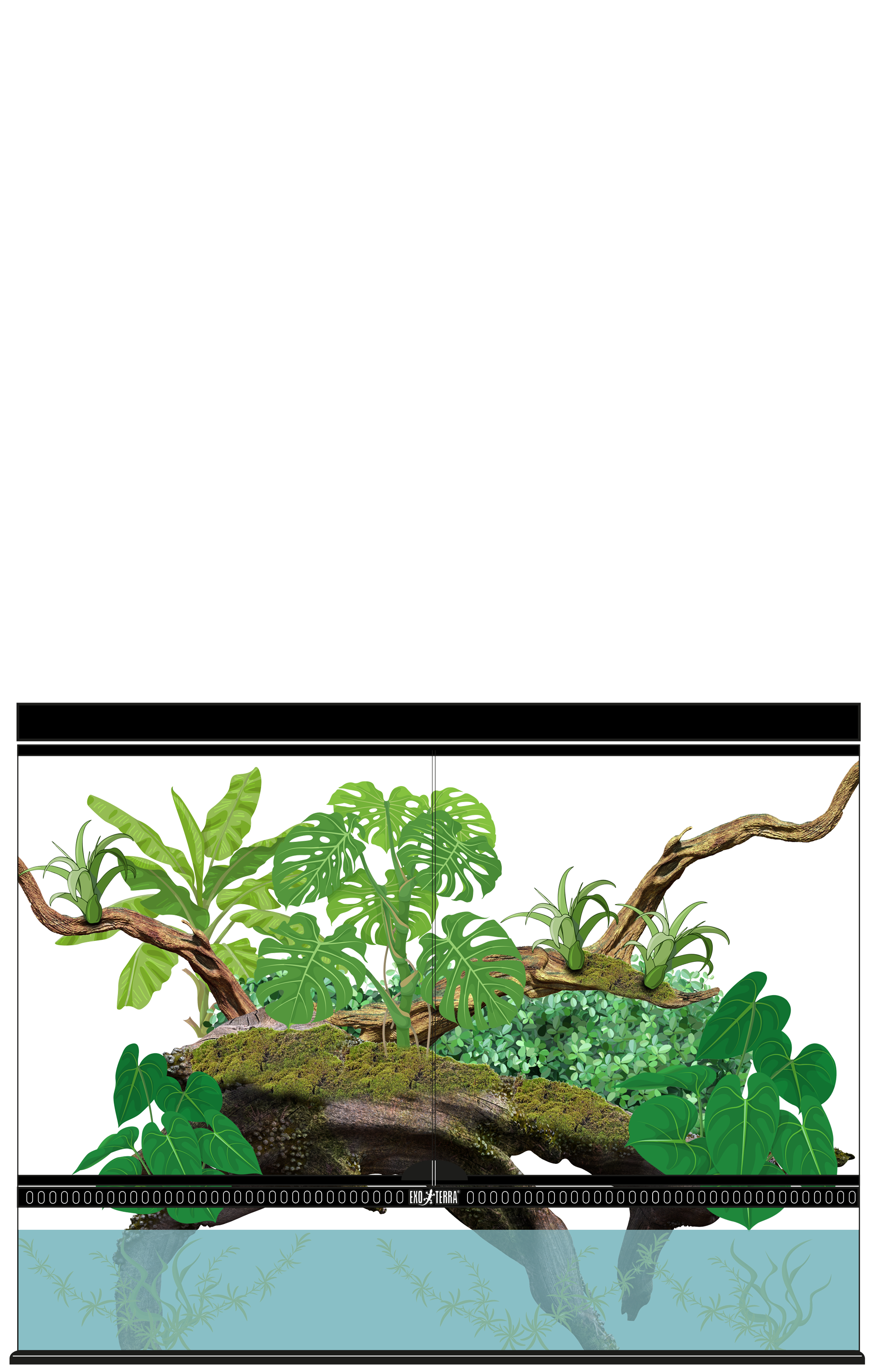
Tropical Aqua Terrarium: Semi-aquatic to aquatic environment of ponds, streams, brooklets, temporary water bodies, flooded grassland and rice fields.
This terrarium landscape utilizes the bottom part of the terrarium almost entirely as a water body both for a living space as well as for hydration and egg deposition. The habitat can consist of a small actual land-part or the land-part can be composed with wood pieces or branches sticking out of the water, sturdy plants and vines, floating plants and aquatic plants. The bottom can be covered with pebbles, like the Exo Terra Turtle Pebbles. The Tropical Aqua-Terrarium habitat can best be replicated in horizontally oriented terrariums.
Stone Desert Terrarium: Stony deserts with a compacted sand/clay/stone substrate.
This habitat consists mainly of a compacted substrate layer with rocky backgrounds, rock outcrops and hiding places. The environment is usually characterized by a very high light intensity, infrared and UV radiation. The compacted substrate layer should therefore include cool-humid tunnels and burrows, while the rocky outcrops provide elevated basking areas for UV- and thermoregulation purposes. Some branches, bark pieces or Cholla cactus skeletons complete the natural design, while at the same time providing temperature gradients and direct shade. The sparse vegetation should consist of cacti, succulent plants and thorny bushes. A small to medium sized water dish ensures the necessary hydration without increasing the overall humidity too much. A Stone Desert landscape can be replicated in both horizontally as well as in vertically oriented terrariums, depending on the preferred dwelling space of the animal.
Savannah Terrarium: Tropical savannahs throughout the world.
This habitat is rather similar to the habitat of the Stone Desert, with a compacted sand/clay/stone substrate, but due to the relatively higher amount of seasonal rainfall, the savanna landscape consists of somewhat more vegetation. The habitat can therefore be completed with some grass plants, succulents and some low bushes. The environment is usually characterized by a very high light intensity, infrared and UV radiation. The compacted substrate layer should therefore include cool-humid tunnels and burrows, but also elevated basking areas for UV- and thermoregulation purposes. Some branches, bark pieces or flat stones complete the natural design, while at the same time providing temperature gradients and direct shade. A small to medium sized water dish ensures the necessary hydration without increasing the overall humidity too much. A Savannah landscape can be replicated in both horizontally as well as in vertically oriented terrariums, depending on the preferred dwelling space of the animal.
Mimicking the natural biotope is crucial for success. It’s essential to research the specific needs of your reptile or amphibian species, consult experienced keepers or herpetologists, and continuously monitor and adjust the terrarium setup as needed to ensure your animal’s health and well-being.
Rik Van Tiggel
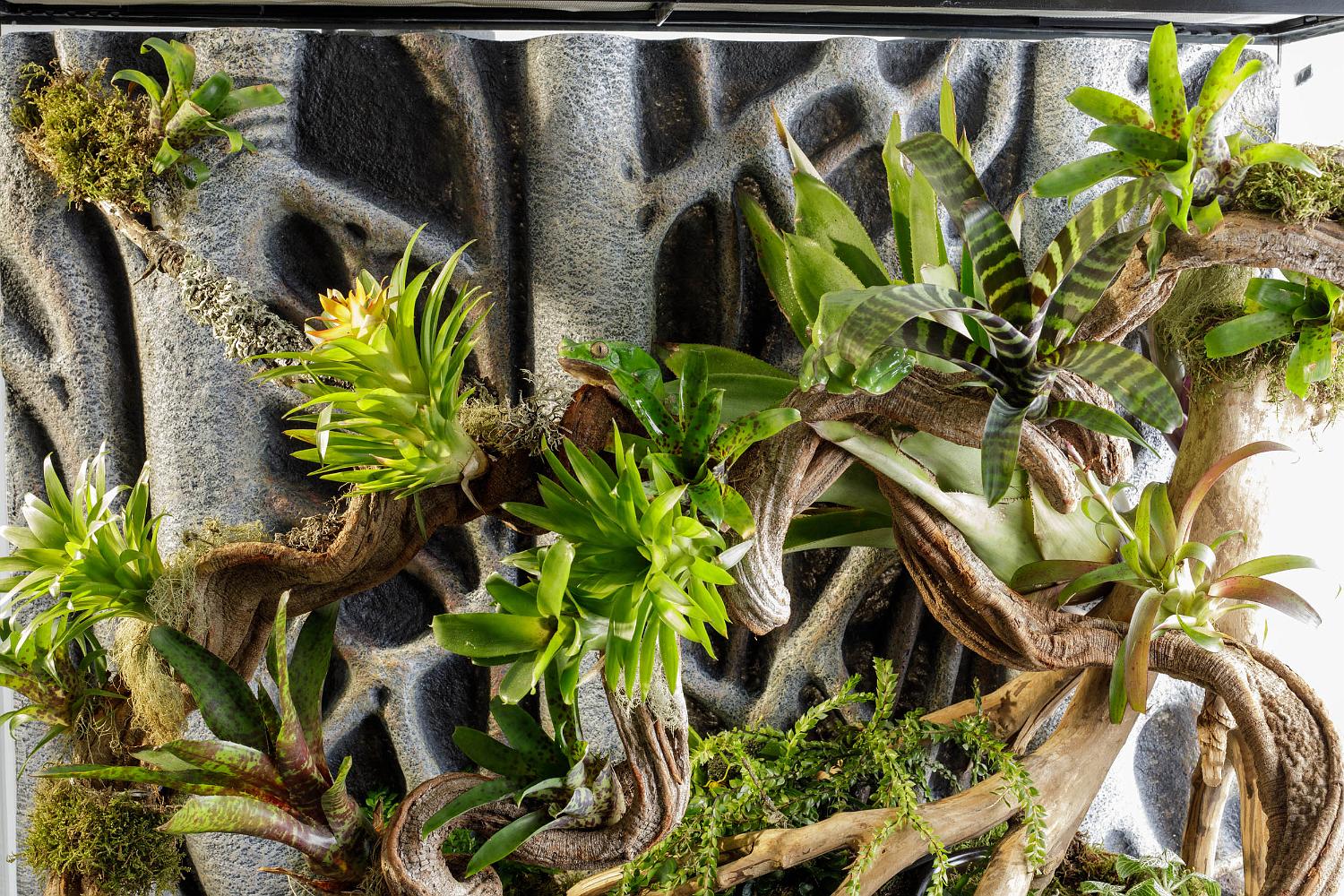

Giant Monkey Frogs (Phyllomedusa bicolor) in a Rainforest Canopy Terrarium.
Terrarium Topics
Paludariums
The word paludarium originates from the Latin word “palus” which stands for swamp. Paludariums are semi-aquatic terrarium habitats that replicate a rainforest, swamp or stream and can harbor aquatic as well as terrestrial animal and plant species. A paludarium combines the best of two worlds: an extra deep bottom allows you to incorporate a substantial water part or aquarium section adjacent to the land or terrarium section. A fully equipped and functioning paludarium is basically a small, closed ecosystem.
Perfecting Terrarium Conditions
Maintaining optimal humidity levels is crucial for the health and vitality of your terrarium. Precisely regulating the humidity levels is essential to ensuring the flourishing of your plants and animals.
Why use a natural terrarium setup?
Using a terrarium setup that closely mimics the natural biotope of the species you are keeping is crucial for several reasons. A biotope refers to the specific natural habitat or environment in which a particular species is naturally found. When creating a terrarium that resembles the natural biotope, you are essentially replicating the conditions under which the species has evolved and adapted to thrive.
Stay up on all things exo terra.
"*" indicates required fields

